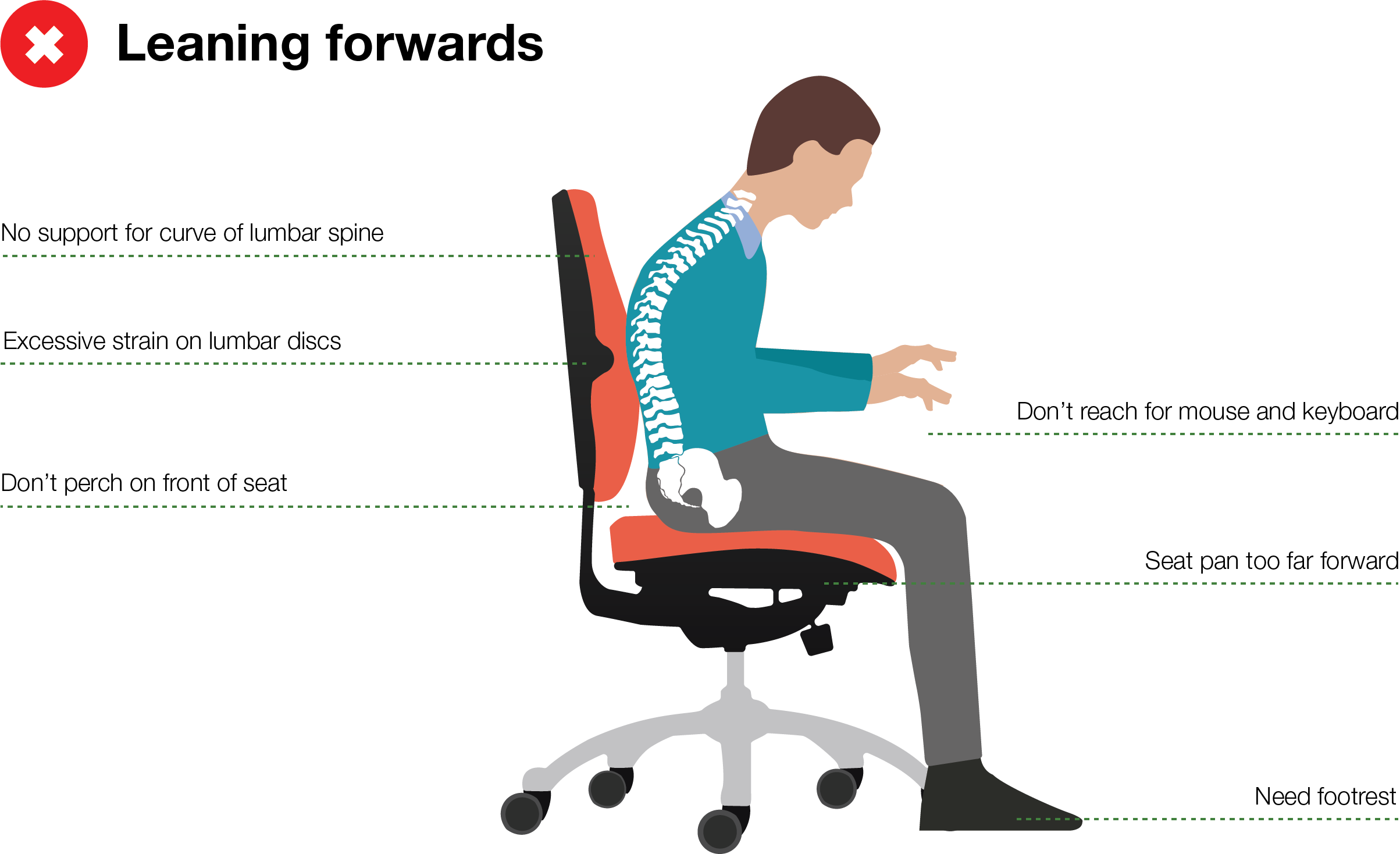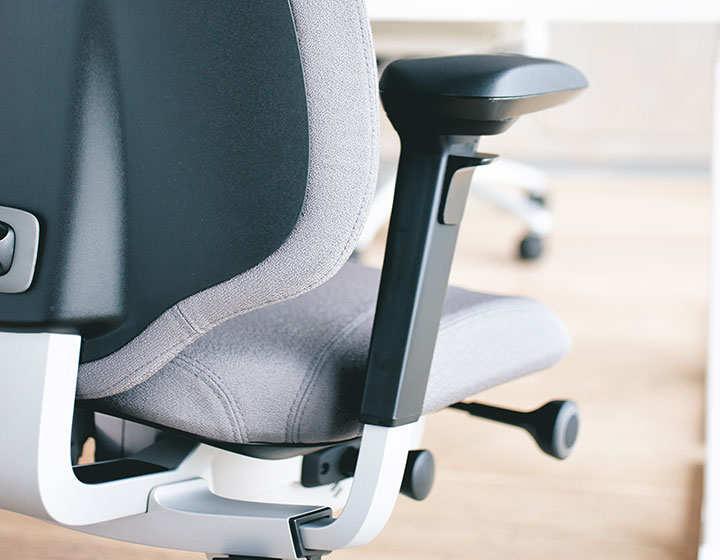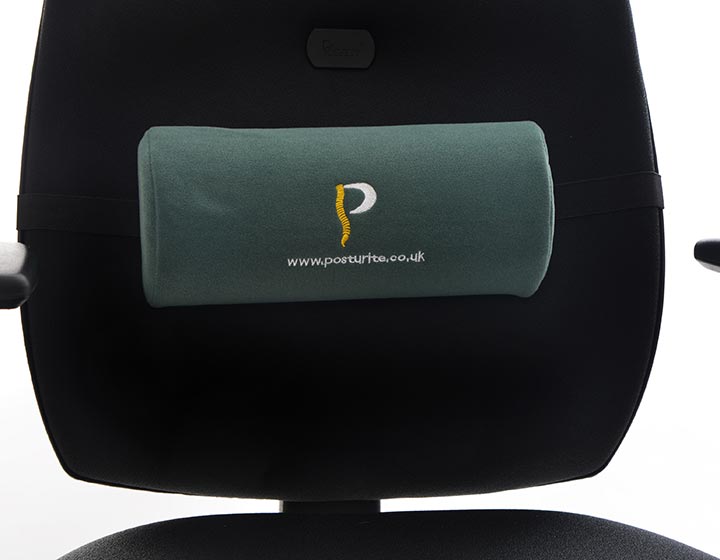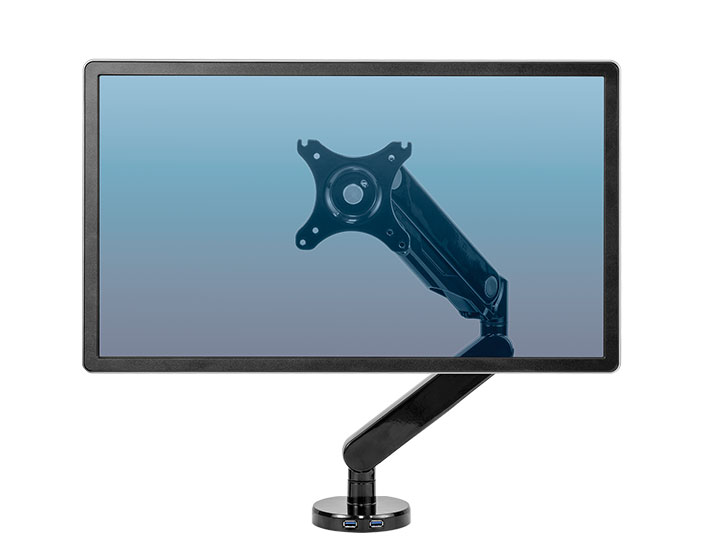This page will show you the correct sitting postures to help ease and prevent back pain while you work. Correct sitting posture is not limited to a single position however, and in fact it’s healthier for your body and mind to switch postures and move about regularly throughout the day. Here are some examples of both good and poor postures.
Good postures


Poor postures


Good posture rules
Here are a few simple good posture rules to help you stay comfortable and healthy for longer
Make sure your back is supported
The inward curve of your lumbar spine should be supported by the back of the chair. You may need to use a lumbar cushion, or adjust your ergonomic chair to ensure your back maintains contact with the chair back.
Incorrect slouching and perching. If you have to perch on the front of your seat or lean forward to use your computer, then try moving your chair closer to your desk.
Some ergonomic chairs feature inflatable lumbar cushions, so user the pump to find your ideal level of support. Alternatively, you can use a separate lumbar cushion.
Choose a seat with a forward tilt of 5°-15°, as this will automatically set your hips higher than your knees, encouraging you into a more upright position.

Make sure your limbs are aligned
Your arms should be relaxed by your side with your forearms parallel to the desk. There should be space between the backs of your knees and the edge of the seat, and your feet should be able to stand flat on the floor.

Mess underneath your desk. This can restrict your movement, lead to awkward positions and impede the blood-flow in your legs. You should also watch out for mess on top of your desk. If you are forced to reach over clutter for your mouse and keyboard then you’re beyond the safe distance range for comfortable hand movements and could suffer hand, arm, shoulder, neck and back pain as a result.
If your feet can’t reach the ground then we recommend that you use an adjustable footrest. If you’re reaching for your mouse then swap your full-sized keyboard for a compact keyboard, which allows you to use your mouse closer to the centre of your body.
Make sure your head is balanced
Your eyes should be level with the top of your screen to prevent head-hanging, a position that can put significant stress on the spine. Your screen should be positioned about an arm’s length away from your body to help prevent eye strain.
A screen that’s too high, low, far away, close, or small. If you’re spending a lot of time at your computer then its position can seriously impact your health and comfort. You might be surprised to find that a small adjustment completely transforms how you feel.
To achieve the most comfortable viewing angle for your computer, we recommend installing adjustable monitor arms. This will give you free reign to find the precise angle for your comfort. For those with a budget, monitor raisers, stacks and blocks can be use to elevate your screen to a more comfortable height.















